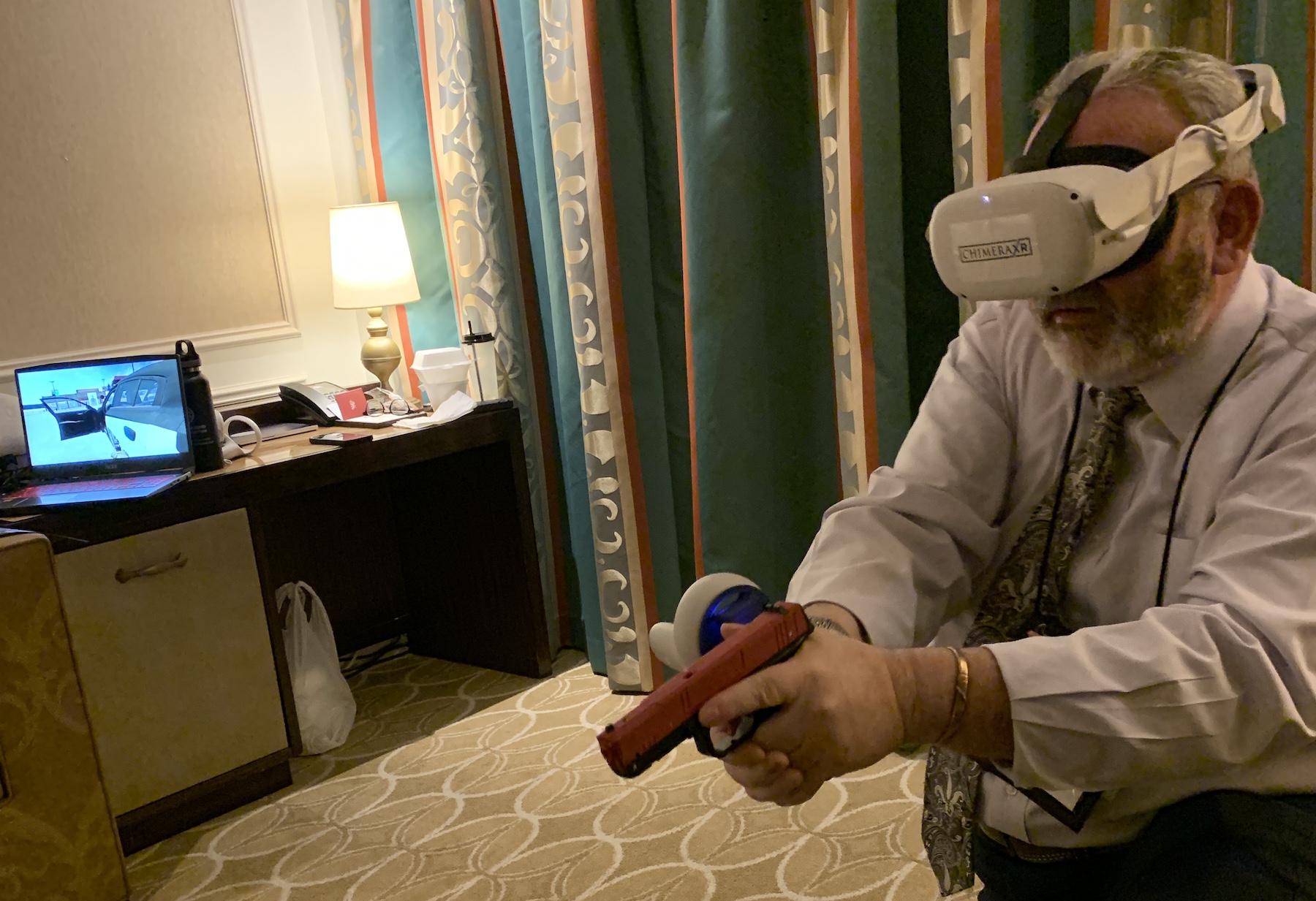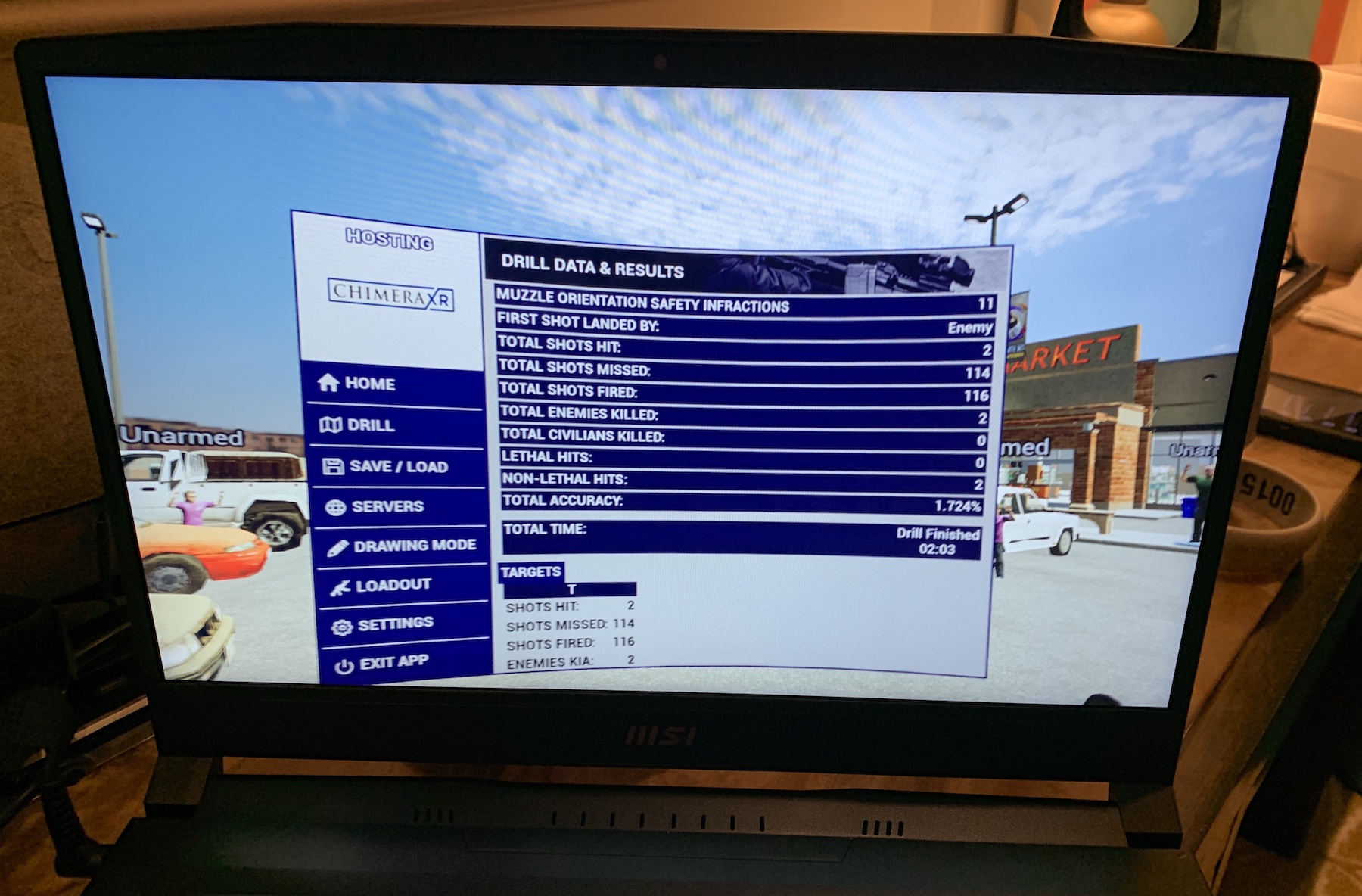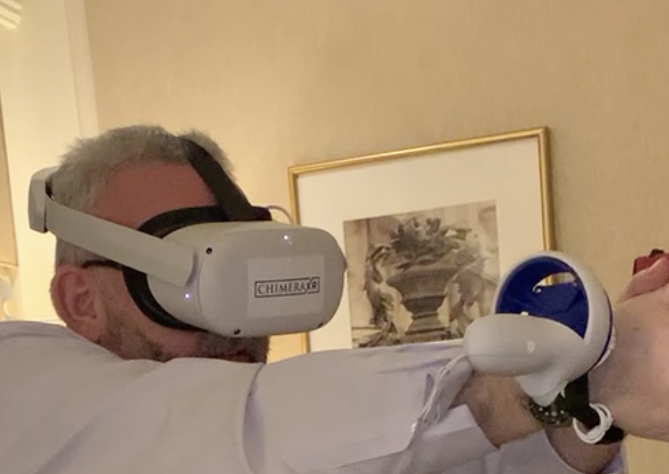
feature_2878 copy
Scenario-based training in my academy class involved role players – often more than one – and evaluators spread out across the grounds of the academy. In addition to those people were the scenario coordinators, a dispatcher or two, and additional support staff. All that starts to get intensive human resource-wise. Never mind the safety issues involving that many people, several of them inexperienced.
As a community, during my time in police work, we have gone through wax bullets and just primers in revolver cases, blanks (which have a significant set of problems), into the first generation of what is now known as Non-Lethal Training Ammunition (NLTA) – Simunitions’ FX marking cartridge, and now several more NLTA manufacturers.
Parallel to that, we had the development of simulators with events projected onto screens. The earliest one I can recall was discussed in my NRA-Law Enforcement firearms instructor course. Photograph an event using slide film (because there was no way to project traditional still photos back then), set up a screen on your range using large rolls of white paper, project those slide onto it, and let the officers make their Don’t Shoot/Shoot decisions. Then they go through the slides for shot placement and discussion.
After that came projected video simulators like FATS and ICAT, some used video discs the size of a long play 33 1/3rd record. (Yeah, I know, I’m old). Over time, options such as instructor-controlled branching came in – say the right things, get a good outcome, do or say the wrong thing, and all goes downhill. Playback features with shot placement became common. A few even had a shoot-back feature using paintball-like projectiles for those not using cover.
Current simulator providers include Virtra, Ti, and Meggit. They can have one or several screens, require one or more projectors and a dedicated space large enough to support the physical equipment. I researched several of these systems during my grad schoolwork. All have benefits for the individual officers and their organizations; they also have some limitations.
Recently, Virtual Reality has moved from gaming into the police training world. I’ll offer that these VR training systems will migrate into training lawfully armed citizens.
Several companies are offering VR training systems for cops. A quick web search gave me a list that included Axon VR, Wrap Reality, Street Smarts VR, and Chimera VR. That list is not complete; there are more. Even Aimpoint USA has a VR system, though it is gamer focused, the GAIM.

Aimpoint is involved with the GAIM virtual reality system; though it is not intended for law enforcement training currently.
Over the past few years, I have been hearing the Chimera name. And often, it was because of acquaintances doing vehicle-centric training for cops in the U.S. and Canada.

Here I’m working around the rear driver’s side of the patrol during a scenario, my view is shown on the laptop.
At SHOT this year, I had the chance to meet with Taylor McCubbin-Freer from Chimera and go through a couple of their scenarios.
They helped me don the headset and get accustomed to the simulated Glock with the transmitter attached.
The allowed work area within the system was small. That was a limitation of the space I would be working within rather than of the system itself.
Chimera has worked at length with Centrifuge Training. As a result, the system’s software comes with a significant amount of data for events in and around vehicles.
One of the scenarios they ran me through involved an open-air ambush and assault in a store’s parking lot. It began while I was seated in the vehicle. I had difficulty acquiring the shooter by sound. At the same time, the system presented a visually hectic environment that included several people doing many, if not all, of the things we see people do under stress and duress.
That included one person who ran out in front of my muzzle – from behind cover. Thankfully, that happened in training.
The replay feature allowed them to take me back through the event and look at what was done right and what could be improved. Each shot’s path and terminal resting point were recorded and displayed in order.
One of those who talked with me about the Chimera VR system before SHOT is John Hearne. He is a researcher and trainer who pays the bills as a federal law enforcement officer. John offered the following:
From what I’ve seen, the Chimera is a great example of the vast potential of VR as a valid training modality.
While I haven’t seen the most recent revisions, it is “almost there” but not quite ready for prime time. My biggest concern was the seeming lack of intelligence and maneuvering by the threat targets. A huge weakness in conventional training is the possibility of cover being negated by movement from the threat. VR would be a great way to teach this. With that said, the full value of the system shines when you have a large space to move about.
As a tool to teach tactics, and particularly the proper tactical movement through a structure, the immersive world of the Chimera combined with its ability to track the student’s body in space is a great solution that needs to be exploited.
The headset does a solid job of providing you, the wearer, with the visual input needed for the training experience.
Are there improvements I would like to see? Yes, one is identifying where sounds are coming from. Another change I would like to see is for the transmitter on the firearm to be attached in a way that easily allows both left and right-handed shooting. Finally, I had been warming up with a pistol-mounted optic. Still, it disappeared off the slide when we started the scenario.
Currently, Chimera supports the Oculus Quest and Quest-2 headsets.
With the current software version, the Basic unit (one per student) goes $15,500 per copy. There is a yearly software subscription that is $1500 annually per unit.
Like the UAFire trainer, agencies should consider this for in-service and academy training.
Source:
https://chimeraxr.myshopify.com/products/chimeraxr-project-mythos




















